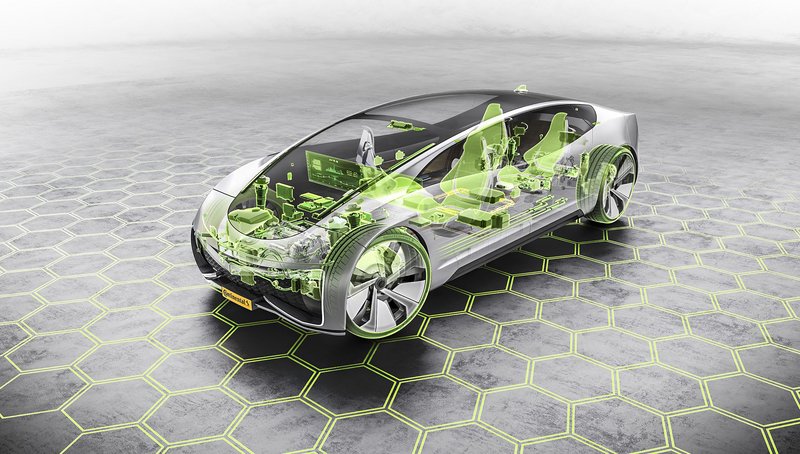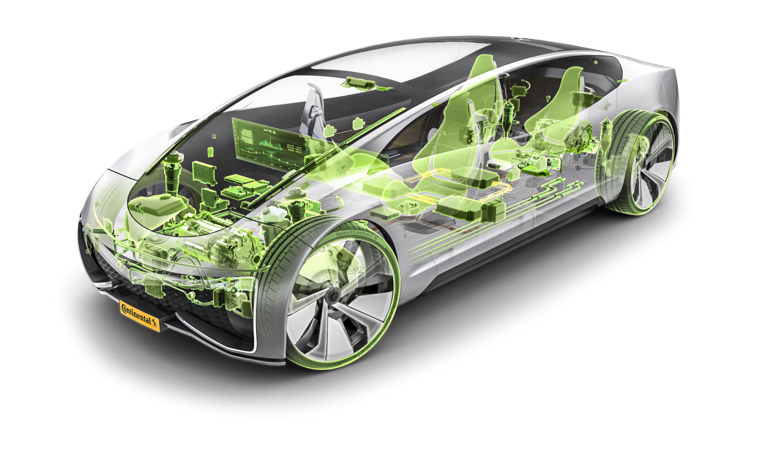Greater Sustainability for Emission-free Vehicles: Continental Paves Way for New Industry Benchmark
- As part of the Carbon Neutral for Emission-free Vehicles program, Continental’s emission-free mobility business will be made completely carbon-neutral worldwide from 2022
- Initiative is part of a comprehensive sustainability roadmap
- By 2040, all Continental production is to be carbon-neutral, and by 2050 at the latest, its entire business
- Independent Science Based Targets initiative (SBTi) confirms that Continental’s roadmap is in line with Paris climate goals
- Dr. Ariane Reinhart, Continental Executive Board member: “We are decisively pursuing the transformation to a sustainable economy.”
Hanover, December 4, 2020. Continental has adopted one of the most comprehensive sustainability roadmaps in the vehicle supplier industry, thus paving the way for a new global industry benchmark. Part of the roadmap relates to emission-free vehicles: from 2022, Continental will make its global business for emission-free cars, buses, trains and other vehicles carbon-neutral. The program covers the company’s production processes as well as their upstream stages and recycling at the end of use. In this way, the technology company is helping the industry make emission-free mobility completely carbon-neutral.
With its Carbon Neutral for Emission-free Vehicles program, Continental is reinforcing its strong position in the growth market of emission-free mobility. The carbon-neutral vehicles initiative is just one of the first stages of Continental’s comprehensive roadmap for sustainable business practices, which aims to achieve 100 percent carbon neutrality, 100 percent emission-free mobility and industry, a 100 percent circular economy and 100 percent responsible value chains – all by no later than 2050.
“With our ambitious sustainability roadmap, we are decisively pursuing the transformation to a sustainable economy. This is the decisive benchmark for us and for the entire mobility industry. While we don’t yet have all the solutions, we are establishing a framework for ourselves and our partners. Sustainability has long been one of the key drivers of innovation at Continental, but now we are taking a major step forward and making it an integral part of our strategy. With our roadmap, we are laying a solid foundation for sustainability like no other company in the supplier industry to date. This will enable us to generate additional profitable growth and competitive advantages,” said Dr. Ariane Reinhart, Executive Board member for Human Relations and Sustainability at Continental, adding: “Sustainable business is the future. It is both an expression of an inner attitude and a forward-looking way of thinking. For this reason, the associated milestones are already firmly established in the long-term remuneration system of the Executive Board and managers.”
Targeted advancement of the mobility of tomorrow
Continental’s Carbon Neutral for Emission-free Vehicles program bridges the gap between emission-free mobility and carbon neutrality – two concepts that are mutually dependent. Emission-free mobility with zero-tailpipe-emission vehicles (ZTEVs, i.e. vehicles without direct drive emissions) must also mean carbon-neutral mobility. “The path to carbon-neutral mobility is a combination of sprint and marathon,” says Dr. Steffen Schwartz-Höfler, head of Sustainability at Continental. It is a sprint in the sense that the entire emission-free vehicles business must be made carbon-neutral across the globe, and a marathon in view of the technological developments required to support the rapidly growing future market of emission-free mobility.”
a) As of 2020, all electricity procured by the company is now from renewable sources.
b) By 2040, all of its production processes are to be made carbon-neutral.
c) By 2050 at the latest, Continental aims to be carbon-neutral across its entire business, from one end of the value chain to the other.
Continental’s climate targets are in line with the goals of the Paris climate agreement, as officially confirmed by the independent Science Based Targets initiative (SBTi). “To achieve the Paris climate goals, two things are necessary: a complete shift to emission-free mobility and a fully carbon-neutral business,” explains Schwartz-Höfler.
Mobility study confirms necessity of acceptance programs for electric mobility
The latest Continental Mobility Study confirms that there is a growing trend toward emission-free electric mobility. In Germany, where reservations do however persist that are slowing, but not stopping, the trend toward electric mobility, one in three people can currently imagine buying an electric car. In China, the world’s largest car market, as many as 86 percent of people are considering the idea. Until now, however, some criticism of emission-free driving has been sparked by the fact that the production of the vehicle components themselves is currently not carbon-neutral. At present, a third of people in Germany say they would not consider buying an electric car for this or similar reasons, with many doubting that the technology is environmentally friendly. In France, a quarter say the same thing. The situation is entirely different in the USA, Japan and China, meanwhile, where the percentage of those who doubt the ecological credentials of electric cars is much lower, ranging from 11 percent in the USA to just 1 percent in Japan. With its Carbon Neutral for Emission-free Vehicles program, Continental is helping to overcome these reservations.
Crucial first step: neutralizing CO<sub>2</sub> output through “negative emissions”
As part of the Carbon Neutral for Emission-free Vehicles program, direct business with emission-free vehicles will be completely carbon-neutral from 2022. Emission-free vehicles include electric cars as well as other means of transport such as hydrogen fuel-cell vehicles and trams. The neutralization of CO2 emissions will be achieved in the first step by generating equal, so-called negative emissions. To this end, all emissions resulting from the procurement and supply of raw materials, from the company’s own production and from recycling at the end of use will be neutralized to the same extent.
Neutralization will mainly comprise the planting of trees and other options associated with the restoration of ecosystems. These and other methods are currently being assessed. In any case it leads to net carbon neutrality. Neutralization will be calculated on the basis of the verified CO2 figures in the latest sustainability report and the annual report. The partners for the program will be carefully selected in the course of the coming year.



